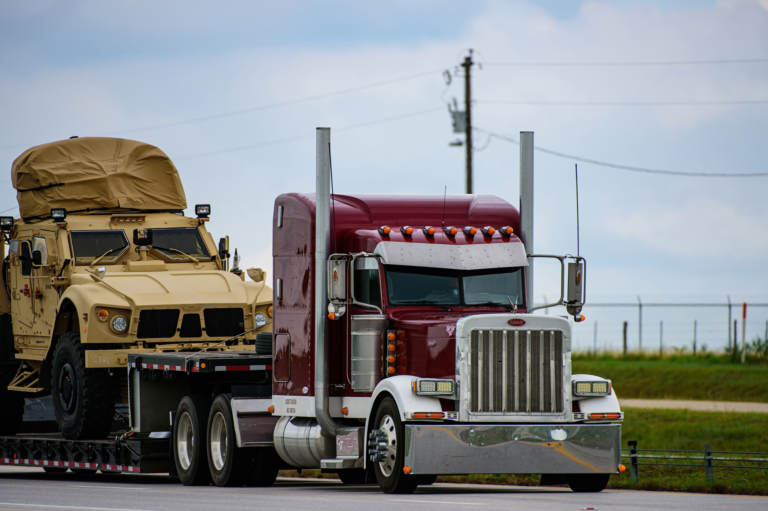Are you a service member preparing for a military relocation? The process can be overwhelming, especially when you have to juggle the demands of your service duties alongside the complexities of moving. That’s why we at Military Movers have put together this comprehensive guide to help you navigate the ins and outs of military relocation.
From understanding your PCS orders to finding the right moving services, we’ve got you covered. Our mission is to make your move as stress-free as possible, and this guide is designed to do just that.
Whether you’re in the Army, Navy, Air Force, Marines, or even a non-military customer, this guide is your go-to resource for a smooth and efficient move. So, let’s dive in and get you prepared for your upcoming relocation.
Understanding Military Relocation
Military relocation is a unique process that requires careful planning and consideration. With the right support and resources, service members and their families can navigate this transition smoothly.
1. The Unique Challenges of Military Moves
Military moves present challenges that are distinct from civilian relocations. Service members often receive short notice about their upcoming move, making it a race against time to organize and execute. Additionally, frequent relocations can take a toll on military families, especially children who have to adapt to new environments regularly.
Military relocations also come with the added pressure of ensuring that all official orders and paperwork are in order. This can be a daunting task, especially when juggling other responsibilities related to the move. However, with the right preparation and mindset, these challenges can be overcome.
2. Importance of Proper Planning
Proper planning is the cornerstone of a successful military move. It ensures that all essential items are packed, legal documents are secured, and the transportation service provider is informed of all specific requirements.
By creating a comprehensive PCS checklist, service members can stay organized and ensure that nothing is overlooked. This not only reduces the stress associated with moving but also ensures a smooth transition to the new duty station.
3. The Role of Military Movers in Relocation
Military Movers play a pivotal role in ensuring that the relocation process is seamless. As experts in the field, they understand the unique needs of service members and offer tailored solutions.
From packing household goods to coordinating with the local transportation office, Military Movers handle every aspect of the move. Their expertise ensures that service members can focus on their duties while the movers take care of the logistics.
4. Benefits of Using a Dedicated Military Moving Service
Using a dedicated military moving service offers numerous advantages. These companies are familiar with the intricacies of military relocations and can provide guidance on everything from weight limits to the transportation of high-value items.
Additionally, they have a deep understanding of the official orders and requirements of different service branches. This ensures that the move is compliant with all regulations, reducing the chances of any hiccups during the process.
5. The Impact of Relocation on Military Families
Relocation can have a profound impact on military families. The frequent moves can be challenging for children, who have to leave behind friends and adapt to new schools and environments.
However, with the right support and resources, such as Military OneSource, families can navigate these challenges. By staying connected with their community and seeking support when needed, military families can turn the relocation process into a positive experience.
Pre-move Preparations
Preparing for a move is crucial, especially for military families. Proper preparation ensures a smooth transition and reduces the stress associated with relocating.
1. Deciding What to Take and What to Leave
One of the first steps in preparing for a move is deciding what to take. This involves sorting through household goods, determining what’s essential, and possibly hosting a yard sale for items that are no longer needed.
It’s also a good time to consider the weight limit imposed by the service branch. Overweight shipments can lead to additional costs, so it’s essential to be mindful of the items being packed.
2. Organizing Important Documents
Organizing essential documents is crucial for a smooth relocation. This includes official orders, school records, medical documents, and more. Creating a PCS binder can help keep these documents organized and easily accessible.
It’s also advisable to make multiple copies of these documents. This ensures that even if one set is misplaced, there are backups available.
3. Researching Your New Location
Before the move, it’s beneficial to research the new location. This includes understanding the amenities available, local schools, and any other relevant information that can aid in the transition.
Military OneSource and other resources can provide valuable insights into the new duty station. This research can help families prepare for what to expect and make informed decisions about housing and other essentials.
4. Connecting With Relocation Assistance Programs
Relocation assistance programs offer support to service members and their families during the moving process. These programs provide guidance on various aspects of the move, from understanding the PCS process to connecting with resources at the new location.
By leveraging these programs, families can ensure that they have all the information and support they need for a successful move.
5. Preparing Children for the Move
Children often find the relocation process challenging. Leaving behind friends and familiar surroundings can be tough. However, with proper preparation and communication, parents can help ease this transition.
Discussing the move, addressing any concerns, and involving children in the packing process can make them feel more in control. Additionally, sharing positive aspects of the new location, such as exciting places to visit or activities to participate in, can build anticipation and excitement.
6. Addressing Health Care Needs Before the Move
Before relocating, it’s essential to address any healthcare needs. This includes scheduling medical check-ups, refilling prescriptions, and ensuring that all medical records are up-to-date and accessible.
For those with specific medical needs, it’s also crucial to research healthcare facilities at the new location. This ensures that there’s no disruption in care during the transition.
7. Setting Up a Moving Budget
Relocating can be expensive, so setting up a budget is crucial. This involves understanding the costs associated with the move, from hiring a moving company to purchasing packing supplies.
By creating a detailed budget, families can ensure that they are financially prepared for the move. This reduces stress and ensures that there are no unexpected expenses.
The Moving Process
The actual process of moving is a significant phase in relocation. It involves multiple steps, from packing to transportation, and requires careful coordination.
1. Choosing the Right Moving Company
Selecting the right moving company is crucial for a successful move. It’s essential to choose a company familiar with military moves and understand the unique requirements of service members.
Before finalizing a company, it’s advisable to read reviews, check their credentials, and ensure that they have experience with military relocations. This ensures that the move is in capable hands.
2. Packing Tips and Tricks
Packing is an integral part of the moving process. Proper packing ensures that items are protected during transportation and arrive at the new location in good condition.
It’s advisable to start packing early, categorize items, and label boxes clearly. For fragile items, using bubble wrap or other protective materials can prevent damage. Additionally, creating a home inventory can be beneficial in keeping track of items and ensuring that nothing is misplaced.
3. Understanding the Transportation Process
Once everything is packed, the next step is transportation. Understanding the transportation process, from pick-up to delivery, is crucial.
Service members should be aware of the pick-up date, estimated delivery time, and any other relevant details. This ensures that they are prepared and can coordinate with the transportation service provider effectively.
4. Ensuring the Safety and Security of Belongings
The safety and security of belongings are paramount during a move. Service members should ensure that the moving company has adequate measures in place to protect items.
This includes using quality packing materials, securing items in the moving truck, and ensuring that the transportation process is smooth and without unnecessary delays.
5. Dealing With Damaged Items
Despite all precautions, there might be instances where items get damaged during the move. In such cases, it’s essential to know the process of filing claims and seeking compensation.
Service members should inspect their belongings upon delivery and report any damages immediately. Keeping photographic evidence and maintaining communication with the moving company can aid in resolving such issues.
6. Utilizing Installation Loan Closets
Installation loan closets are a valuable resource for service members. They provide essential items on loan, helping families settle into their new location while waiting for their household goods to arrive.
By utilizing loan closets, families can ensure that they have the necessary items to start their new life without any disruptions.
Read More: PCS Moves for Single Service Members: A Detailed Guide
Settling Into Your New Location
Once the move is complete, the next phase is settling into the new location. This involves multiple steps, from unpacking to exploring the new community.
1. Unpacking and Organizing Your New Home
Unpacking is the first step in making the new place feel like home. It’s essential to prioritize and start with essential items, ensuring that the family can settle in comfortably.
Organizing the new home, from arranging furniture to setting up the kitchen, can make the transition smoother. It’s also a good time to create a new home inventory, ensuring that all items are accounted for.
2. Registering Children in New Schools
For families with children, registering them in new schools is a priority. It’s essential to research local schools, understand their curriculum, and choose the best fit for the child.
Additionally, transferring school records and ensuring that the child has all the necessary materials for the new school is crucial. This ensures that the child can transition smoothly and continue their education without any disruptions.
3. Exploring Local Amenities and Services
Once settled, it’s beneficial to explore the new location. This includes understanding local amenities, from grocery stores to recreational facilities.
Familiarizing oneself with the new community can make the transition smoother. It also provides an opportunity to make new friends and build a support system.
4. Building a Support System in a New Community
Building a support system is crucial, especially for military families who move frequently. Connecting with neighbors, joining local groups, and participating in community events can help in forging new relationships.
Having a support system provides emotional support and helps families navigate the challenges of settling into a new location.
5. Adjusting to New Time Zones and Climates
For those moving across states or countries, adjusting to new time zones and climates can be a challenge. It’s essential to understand the local climate, prepare accordingly, and give oneself time to acclimatize.
For children, explaining the changes and helping them adjust can make the transition smoother. Whether it’s dealing with jet lag or adapting to a new climate, patience and understanding are key.
Read More: Navigating School Changes During PCS Moves: A Guide for Parents
Post-move Considerations
After settling into the new location, there are still some considerations to address. These ensure that the move is complete and that families are well-prepared for future relocations.
1. Evaluating the Moving Experience
Reflecting on the moving experience is crucial. It provides insights into what went well and areas that need improvement. This evaluation can be beneficial for future moves, ensuring that the process is even smoother next time.
Whether it’s feedback on the moving company or notes on the packing process, documenting the experience can be invaluable.
2. Addressing Any Pending Claims
If there were any damages or issues during the move, it’s essential to address them promptly. This includes filing claims, seeking compensation, and ensuring that all concerns are resolved.
Keeping open communication with the moving company and having all necessary documentation can aid in resolving any pending claims.
3. Providing Feedback to Moving Companies
Feedback is crucial for moving companies. It helps them improve their services and ensures that they meet the needs of their clients. Service members should provide honest feedback, highlighting both positives and areas of improvement.
This feedback benefits the moving company and other service members who might use their services in the future.
4. Tips for Future Moves
Every move provides valuable lessons. Documenting these lessons and creating a list of tips for future moves can be beneficial. Whether it’s a new packing technique or a resource that proved invaluable, noting it down can make future relocations even smoother.
Sharing these tips with fellow service members can also provide them with valuable insights, making their moves more manageable.
5. Utilizing Resources for Continuous Support
Even after the move is complete, it’s essential to utilize resources for continuous support. This includes connecting with support groups, accessing resources like Military OneSource, and staying updated with any changes in regulations or procedures.
Continuous support ensures that families are well-prepared for any future relocations and can navigate the challenges of military life with ease.
Why Choose Our Service at Military Movers?
At Military Movers, we pride ourselves on offering a comprehensive suite of services tailored specifically to the unique needs of our military clientele. Our deep understanding of the challenges faced by service members during relocations drives us to provide solutions that are both efficient and effective.
- Experience and Expertise: With decades of experience under our belt, we have honed our skills to perfection, ensuring that every move is executed seamlessly.
- Tailored Solutions: We understand that every move is unique. That’s why we offer customized solutions that cater to individual needs, ensuring a stress-free relocation experience.
- Advanced Technology: Our state-of-the-art satellite tracking technology allows clients to track their shipments in real-time, offering peace of mind and transparency.
- Affordability: We believe in offering top-notch services without breaking the bank. Our transparent pricing eliminates hidden fees, ensuring affordability without compromising on quality.
- Comprehensive Services: From packing to transportation, we handle every aspect of the move. Our services include:
- Local and long-distance moving
- Packing and unpacking services
- Secure storage solutions, including climate-controlled options
- Real-time shipment tracking
- Assistance with documentation and official orders
Conclusion
Relocating, especially for military personnel, can be a daunting task. However, with the right support and resources, it can be a smooth and stress-free experience. Military Movers is dedicated to ensuring that every service member and their family receives the best possible assistance during their move.
Our tailored solutions, combined with our commitment to excellence, make us the go-to choice for all military relocations. If you’re planning a move soon, reach out to us and let Military Movers make your transition as seamless as possible.
Ready for a hassle-free move? Contact Military Movers today and experience the difference of a dedicated military moving service!
FAQs
Military Movers specializes in catering to the unique needs of service members and their families. Our deep understanding of military relocations, combined with our tailored solutions, sets us apart from generic moving companies.
Yes, while we specialize in military relocations, we are open to assisting non-military customers as well. Our commitment to excellence and customer satisfaction remains consistent, regardless of the client’s background.
With our advanced satellite tracking technology, clients can easily track their shipments in real time. Once your move is underway, we provide you with access to our tracking system, ensuring transparency and peace of mind.
No, at Military Movers, we operate on a transparent pricing plan. We ensure that our clients are fully aware of all costs upfront, eliminating any surprises or hidden fees.
Yes, we provide both temporary and permanent storage options. For items that are sensitive to temperature changes, we also offer climate-controlled storage solutions.




